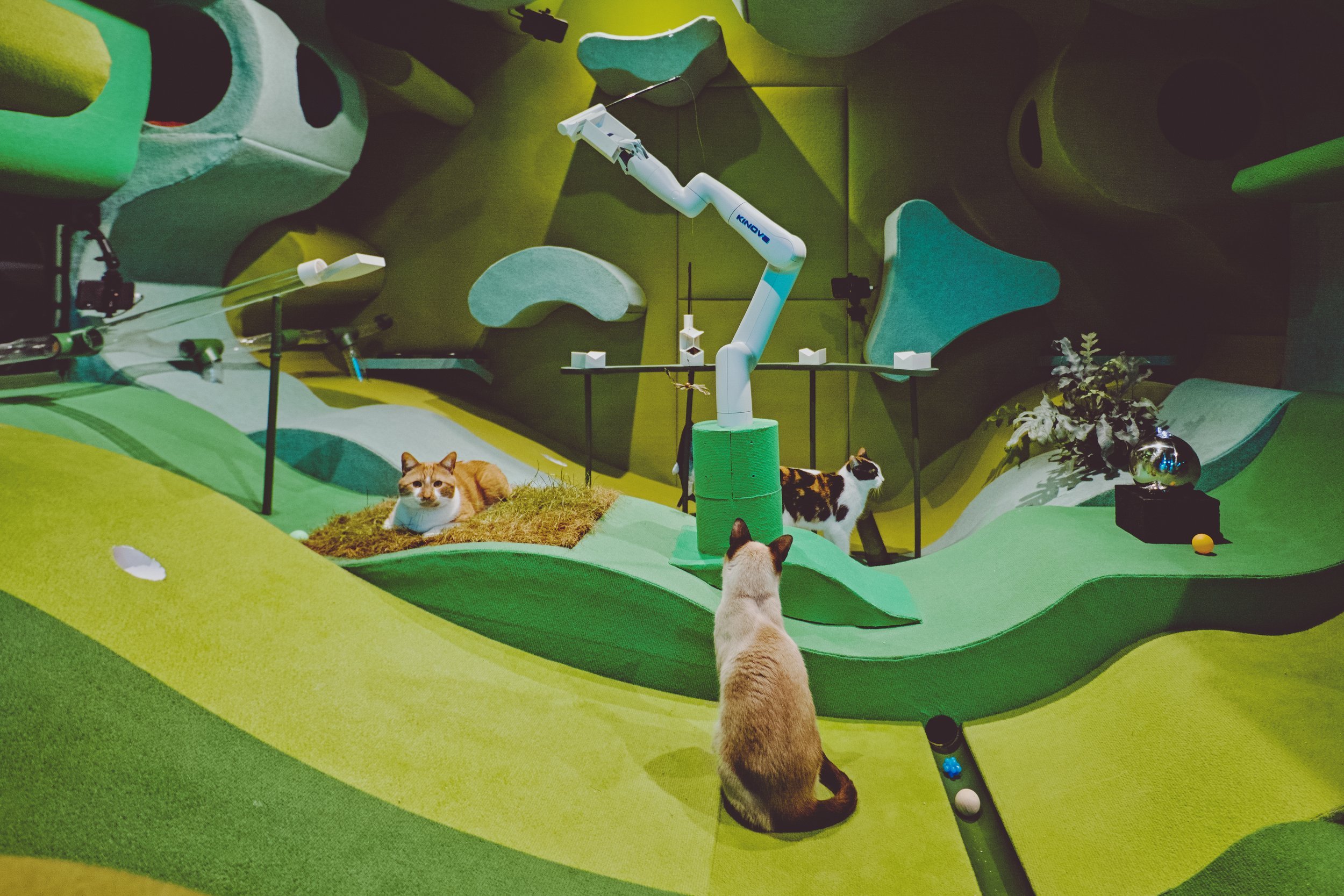Cats cavort in a techno-utopia, self-driving cars subverted, and teaching your LLM how to love. AI examined in the Science Gallery London
From Blast Theory’s Cat Royale at the Science Gallery London
This looks like a rich and fun meditation on the march into the everyday of AI, at the Science Gallery London. In their words:
The new season at Science Gallery London, AI: WHO’S LOOKING AFTER ME?, takes a questioning and playful look at the ways artificial intelligence is already shaping so many areas of our lives - from our healthcare and justice systems to how we look after our pets.
Who holds the power, who distributes the benefits, and who bears the burden of existing AI systems? Can we rely on these technologies for our wellbeing and happiness?
Some of the exhibition highlights:
James Bridle’s Autonomous Trap 001 is ingenious:
What if we could free AI from corporate power to reimagine it as a tool for resistance and collaboration?
You’re looking at a vehicle sitting in the middle of a parking lot, near Mount Parnassus in Greece, surrounded by a salt circle. The circle - a traditional form of protection in magical practice - is a trap for a self-driving car that relies on machine vision to guide it. The solid and dashed lines are a "no entry" pattern, directed inwards, so that the car, programmed to obey the road rules, cannot leave without breaking its own programming. The car is trapped.
Bridle wrote his own software, built neural networks and rigged up cameras to build his own self-driving car. Instead of subscribing to a singular version of technology sold to us by companies, he uses his agency to shape the technology himself.
The artist shows the potential of human-machine relationships that invite different understandings of the world, resisting corporate power.
Blast Theory explains about their exhibit, Cat Royale:
From “Cats Royale” at Science Gallery
In a society where machines have increasing agency in our daily lives, Cat Royale explores the impact of technology on animal (and human) welfare. It asks us to consider whether we should task AI with making us happier. ..
Cats will live inside a utopia created by the artists. The cats’ every need will be catered for, with spaces for playing and socialising, and spaces that are relaxing and private. They will have walkways, cubbyholes and raised viewing platforms.
And at the centre of the room will be a robot arm and a computer vision system offering activities to make the cats happier. The system may throw a ball, dangle a feather or offer a massage.
To ensure the comfort and safety of the cats, experts in animal welfare have been involved in the design of the project from the start and will guide us at each stage.
The computer vision system will try to measure the happiness of the cats and learn how to make them happier.
Fast Familiar’s Looking For Love delightfully puts you in the role of an LLM’s data-set, where you are teaching it about romance:
Can you teach a robot how to love?
Part modern-day tamagotchi, part interactive fiction, Looking for Love is a playful experience that takes place over a message-based dating app.
Take a seat in Fast Familiar’s ‘internet cafe’ to teach a robot about romance. Surely training the machine on everything the internet knows about love will result in unparalleled romantic success? In your role as a wing-(hu)man, you’ll provide advice, encouragement and be that vital shoulder to cry on when things don’t work out…
Help the machine distil the essence of romance from movies, poems and song lyrics; compare your definitions of love; and determine how much of a role you want data to play in your own love life.
Blending artificial Intelligence, human intuition and everything that gets lost in translation, this artwork invites you to take the perspective of another form of intelligence, to reflect on the peculiarities of our own.




